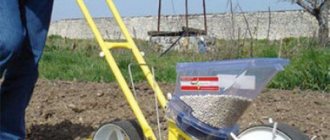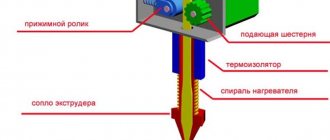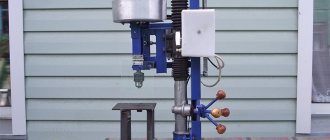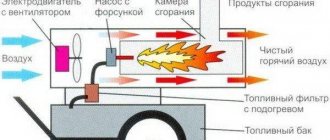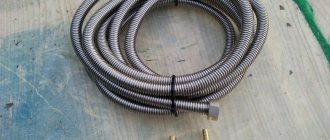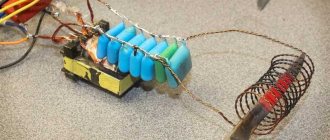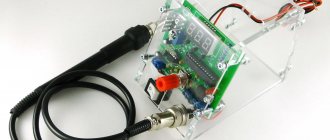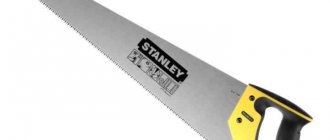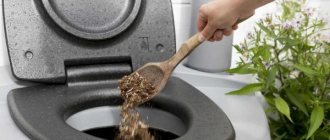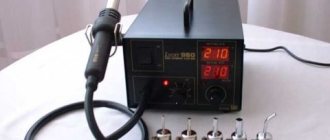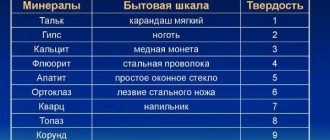Few of the lucky people who have acquired a dacha or country plot for the first time use mechanization means when sowing lawns. Most people find it unwise to spend money on a device that they think they will only need once a year at best.
But when uneven shoots appear, it becomes clear that the lawn seeder and the costs of purchasing it are well worth the time spent in painstaking manual labor. What this device can be used for, in addition to its main purpose, how to choose the most suitable model, and how much it will cost, will be discussed below.
Functionality
The main purpose of the seeder follows from its name - uniform sowing of seeds. But, most of these devices can also be used to evenly distribute various powder or granular preparations over the surface.
A seeder can help:
- Apply mineral fertilizers, dolomite flour, and chalk to the soil.
- Spread pest control products throughout your lawn or garden.
- Distribute de-icers along the street and walkways in winter.
It is important that mechanization not only reduces time spent on manual labor, but also protects against excessively frequent and close contact with chemicals.
How to make a manual carrot seeder with your own hands
Planting carrots always takes a long time. If you sow seedlings in random order, then as they sprout, you will have to thin them out and remove weak shoots. To reduce planting time and to plant evenly, seeders are used. You can purchase them or make them yourself.
Seeders made for manual sowing are divided into several types:
- Fertilizers - recommended to simplify the process of fertilizing or distributing lime throughout the territory;
- Garden - designed for sowing seeds for agricultural needs in areas near the house or vegetable gardens;
- Grain-cereals - provide for planting over vast areas - in grain fields.
Tukovaya Garden Grain-cereal
A simple seeder can be made from scrap materials without spending much money. But all simple devices are made only for the hole, that is, adjusting the required volume of the hole is often problematic or almost impossible.
If you make a simple seeder with your own hands, it is recommended to provide for the moment of planting various planting materials. It is necessary so that the hole made from a sheet of iron can be adjusted.
The advantages of such a device are:
- Uniform sowing of planting material;
- Placement at the same depth ;
- Equal distance between plantings;
- Easy to use;
- Ease of creation.
With the help of such a unit you can quickly and in a short time plant a large area. After working with a carrot seeder, you will not have to pull out excess seedlings, injuring those that remain for further growth.
Manual seed planter
This type of planting technology is used over vast areas. It is able to create even grooves and place an even amount of seeds in them. It can be used not only for sowing carrots, but also beets, onions, parsley, lettuce or other small seeds.
Manual carrot seeder
The groove is made through the movement of a wheel on which special blades or spikes are located. With these growths, the wheel creates holes of a certain size with the same depth.
The design of the seeder is such that a spout comes from the hopper, through which a certain volume of seeds is sown. The supply of seedlings is strictly regulated by a special valve.
At the back there is an additional wheel with a smooth surface, which, when moving, fills and compacts holes with planting material.
Some hand drills can have multiple rows of planting and can be adjusted for the depth of the planting hole.
A piston carrot seeder looks like a cylindrical plastic container. Planting material is placed in it. At the bottom there is an adjustable conical hole for sowing seedlings into the soil. On top of this device there is a piston equipped with a spring.
Piston Carrot Planter
This unit works on the principle of squeezing a certain amount into a pre-prepared hole in the ground. To prevent seedlings from scattering in different directions, a piston seeder is placed 5 cm above ground level.
Some farmers consider the piston planter to be a problematic device, and replace it with an ordinary medical syringe. But working with a syringe causes a lot of inconvenience:
- When squeezing out seeds, they often scatter in different directions ;
- The pressure on the syringe cannot be controlled, so the seeds fall out in different volumes.
The piston planting system is designed for large areas, but with a syringe you can’t sow much. Therefore, it is better to use a piston with spring pressure.
Funnel-shaped
One of the simplest mechanisms is a large dispenser with a miniature “spout”. The cone, which goes into the ground, has a hole, the volume of which can be adjusted by the diaphragm located inside.
The funnel is placed above the soil surface at a height of up to 15 cm and the preparation is gently shaken . The seeds, rolling out along the groove, are evenly placed in the furrow.
Using such a funnel-bowl, it is possible to achieve correct, even furrows, without being thickened with an excessive amount of seeds.
The disadvantage is the need to adapt or adapt to such work . If you shake frequently or vigorously, you can plant the seeds not in the furrow at all, but around the entire area.
Carrot planter made from a block
This planting method is similar to the egg tray method. To make a planter from a block, you will need several plastic lids and a wooden block. Its dimensions can be arbitrary, but it is better to stick to the proven volume of a wooden board - 5x5x50 cm .
Carrot planter made of bars and lids
The lids are nailed on one side. The soil needs to be loosened well so that it is airy and soft. The top layer of soil is leveled evenly.
The side with the lids is lowered into the soil and pressed . After the block is raised above the surface, even holes remain in the soil substrate for planting carrot seeds.
All that remains is to insert the prepared seedlings and sprinkle.
Classification
According to the principle of action, they are distinguished:
- Centrifugal seeders contain a rotating disc that scatters the seeds in a circle.
- Row seeders, in which seeds are poured out in rows from a hopper containing them.
Centrifugal seeders provide high speed operation, but require certain skills and habituation, without which flaws are possible. All manual and some self-propelled seeders are based on this principle. Row seeders are slower but provide high seeding uniformity.
Centrifugal seeders
According to the control method they are distinguished:
| Control type | Design Features | Method of use and purpose |
| Manual seeders | A container for seeds equipped with a rotary centrifugal mechanism that scatters them in a circle. | Holding the device in one hand, the sower turns the handle of the mechanism with the other, moving across the sown area. Designed for sowing small areas and correcting lawn defects. |
| Wheeled manual | A trolley with a hopper for seeds, which are poured out in rows through special holes. | The operator rolls the cart in front of him, opening or closing the holes as necessary. Designed for medium-sized lawns. |
| Self-propelled | Wheeled seeders equipped with a battery and an electric motor that provide their movement. They can carry out row sowing or be equipped with a centrifugal circular sowing device. | Semi-automatic control, a number of additional functions. Can be used for sowing over large areas. |
| Trailed | Wheeled row seeders designed to be coupled to a mini-tractor or walk-behind tractor. | Professional devices used on football and golf fields, in public gardens and other urban green areas. |
Design
The design of the precision seeder is very simple:
- It consists of a solid body mounted on a wheeled platform.
- For ease of control, the mechanism is supplemented with holders.
- The hopper is equipped with a lid that prevents seeds from spilling out or being blown away by the wind. It is made in a certain shape, so there are no dead zones in the corners of the hopper where seeds accumulate.
- The dosing shaft can be with one or two rows. The special design provides better grip, movement of seeds under the brush and clearer discharge. The shaft, which acts as a dispenser, rotates freely, ensuring sowing of seeds for any vegetable crops.
- The width of the row is set with special markers.
- The trapezoidal coulter, located at the base of the seeder, cuts a furrow and facilitates the shedding of soil into it after seed placement. Additionally, fertilizers can be applied. Thanks to the special shape of the coulter, lumps of soil do not get into it, and this in turn prevents jamming.
- The whiskers ensure free release of seeds along the step of the dosing shaft.
- A special seal helps reduce the germination time of seeds.
If necessary, seeders are connected into multi-row blocks for mechanized sowing using small wheeled tractors.
This is done using connecting strips. This method of joining is also advisable if it is necessary to organize work together.
Manual
Essentially, any manual seeder is a small hopper for seeds with a centrifugal mechanism attached to the bottom, ensuring their uniform scattering in a circle. The dosage is ensured through the use of fluffy brushes that prevent excess seeds from falling off.
These are inexpensive and simple devices with which you can quickly sow a large area, regardless of its topography. Due to the latter circumstance, manual devices are out of competition with their mechanical counterparts, the quality of which greatly depends on the ground topography.
Flaws:
- Small dispenser adjustment range.
- Possibility of using only seeds of the same size.
- To work you need to acquire certain skills.
Expert opinion
Kulikov Vladimir Sergeevich
When purchasing a manual seeder, you should take into account that the scattered seeds must be deepened into the ground. To do this, you will need a fan rake or a lawn roller.
Brigadier 86020
The simplest manual seeder with a rotary spreader, made of durable plastic. It is possible to change the diameter of the seed supply hole. It has gained great popularity due to its optimal price/quality ratio. Suitable not only for seeds, but also for fertilizers and flower mixtures.
Price – 900 rubles.
Gardena M
The seeders of this company actually monopolized the market for manual devices, displacing other manufacturers from it. This model has a hopper capacity of 1.8 liters and a processing width of 40 cm, which is enough to sow an area of 100 square meters in one go. meters. In addition to sowing, this device can be used for dosing fertilizers, lime, sand, salt and other bulk products. Attached is a table for calculating the amount of fertilizer.
Price – 1,400 rubles.
Wolf-Garten WE-B
This manual seeder from a German manufacturer is equipped with an electric motor and is battery-powered, which provides a seed scattering range of up to 2.5 meters and significantly speeds up work. But this seriously affects the cost of the device.
Price – 3,200 rubles.
I have long dreamed of tidying up the lawn near my house, but manual seeding did not give acceptable results. My husband, having studied information on the Internet, purchased an inexpensive Gardena M seeder. I was amazed at how much it made the work easier, I was able to quickly fertilize and sow the soil, and the lawn is now pleasing to the eye with its greenery.
Olga Popova August 25, 2018
Differences by type and model
On a walk-behind tractor
| Row spacing | Premium STV-2 | STV-4 | SM-6 |
| Width between rows | 160-500 mm | 160-500 mm | 150 mm |
| Seed placement depth | 10-60 mm | 10-60 mm | up to 60 mm |
| Number of openers | 2 pcs. | 4 things. | 6 pcs. |
| Sowing width | 1100 mm | 1150 mm | 900 mm |
| Volume of one bunker | 3 dm³ | 3 dm³ | 40 dm3 |
| Equipment weight | 40 kg | 58 kg | 55-63 kg |
To the tractor
| STV-6 | ST-12 | HRC-6 | |
| Sowing area per hour of work | 2.16 ha/hour | 3.24 ha/hour | from 1.9 to 4.2 ha/hour |
| Sowing width | 4.8-6 m | 5.4-6.0 m | from 2.7 to 4.2 m |
| Seed placement depth | 25-55 mm | 25-55 mm | 25 mm |
| Width between rows | 0.6-0.75 m | 0.45-0.5 m | from 0.45 to 0.7 m |
| Volume of one bunker | 28 dm3 | 28 dm3 | 20-30 dm3 |
| Unloaded weight | 1,228 tons | 1,450 tons | 0.7 tons |
Manual
| «Summer resident-7M» | «Summer resident« | «Zorka-M« | |
| Sowing width | 0.36 m | — | — |
| Seed placement depth | 40 mm | 50 mm | 20-50 mm |
| Width between rows | 0.6 m | – | — |
| Volume of one bunker | 0.75 dm3 | 0.75 dm3 | 1.2 dm3 |
| Travel speed | 3-4 km/h | 3-4 km/h | 3-4 km/h |
| Number of rows sown | 7 pcs. | 1 PC. | 1 PC. |
| Unloaded weight | 4.5 kg | 0.9 kg | 10 kg |
Wheeled manual and self-propelled
1-Self-propelled seeder 2-Wheel manual seeder
In this case, it is better to immediately start with the disadvantages - the quality of operation of these devices depends on the topography of the site; they work well only on a flat, pre-prepared surface. In addition, the cost of wheeled vehicles is significantly higher than that of their manual counterparts.
Expert opinion
Kulikov Vladimir Sergeevich
However, if you plan to sow a large area, you cannot do without such equipment, because The bin volume of wheeled seeders can reach up to 40 liters, and the processing width can be up to 3 meters.
Expensive models have the following advantages:
- Possibility of precise adjustment of the dispenser for any seed size.
- Sowing seeds at a certain depth, which ensures their germination and saves seed material.
- The presence of a device for leveling the soil after sowing, the seeds are not only distributed in the soil, but also buried in it.
Gardena L
An inexpensive manual wheeled seeder with a hopper capacity of 12.5 liters and a working width of 45 centimeters. In one load it will sow a lawn of 400 square meters. meters. Can be used to apply any bulk materials: fertilizers, lime, sand, salt. The adjustment lever is conveniently located and does not complicate control.
Price – 3,000 rubles.
Wolf-Garten WE
Another model from Germany, the high cost of which is compensated by the corresponding quality and accuracy. It is equipped with a hopper with a volume of 20 liters and has a passage width of 43 centimeters. In addition to sowing seeds, it can be used for dosed dispersion of any bulk materials and chemicals. Unused raw materials can be stored directly in the bunker, and specially designed wheels prevent damage to the soil and grass.
Price – 7,500 rubles.
Bellon SSM50
A universal model designed for domestic and commercial use. The possibility of multi-purpose year-round use is provided: for sowing seeds, applying fertilizers, preparations and reagents. Tank volume 50 liters, processing width 60 centimeters.
Price – 70,000 rubles.
To sow lawn grass, I used a two-wheeled Gardena L seeder. The result pleased me and made my neighbors jealous - now there is no end to those who want to borrow this wonderful equipment.
Pyotr Savelyev July 15, 2018
About the design of a seeder for manual precision sowing of seeds
A manual precision seed drill, just like a garlic seeder, in its design features looks like a rather unpretentious invention . It consists of one or more containers where the seed will be located, a control handle and a frame located on wheels.
The wheels, which are located in front of the device, form holes or furrows, after which the seed from the hopper falls there, and the rear wheels fill the resulting hole with loose soil.
As we can see, the principle of operation is quite simple. In fact, you simply direct the unit over the area where you plan to grow various vegetable crops, and behind you there will already be holes with seeds.
At the same time, with the help of a manual seeder and a lawn seeder, you can plant not only seeds of lawn grass and vegetables, but also fill sand or fine gravel on icy and snowy paths in winter, so that you can safely walk on them without fear of falling.
Manual seeder for precision seeding
In general, the process of working with a manual precision seeder can be divided into three stages:
- Assembly process. First you need to install the control handle from the transport position to the working position, and then put the rear wheel on the axle (if the unit used consists of two wheels). If necessary, we adjust the marker.
- Carrying out regulatory actions. Depending on what kind of crop the seed will be used, the installation of a specific disc in the bunker will depend. It is difficult to confuse them because they are all properly labeled.
- The depth of the share must also be adjusted according to the specific seed.
- Carrying out sowing work. After we put the unit into action, torque is transmitted from its front wheel to the disk through a belt or chain drive. This disk captures the seed from the container, and the ploughshare forms the desired depth of the hole.
- The marker is responsible for ensuring that the row of seeds planted is level , so he forms a line on the ground for the next row.
For convenience, as well as for uniform distribution of seeds in the soil, it is recommended to sow the first row along predetermined contours. You can drive two pegs along the edges, connecting them with rope or thread. Thus, following parallel to this border, you will get a very even and visually beautiful row.
How to avoid mistakes when choosing a device
There are some common myths and prejudices among consumers that should be avoided:
Myth No. 1
High cost guarantees quality and performance. Yes, as a rule, truly high-quality products are more expensive. But you can’t focus only on brand and price. There is no point in purchasing a high-performance automated device for sowing a couple of small lawns of one or two hundred square meters. Perhaps he simply will have nowhere to turn around.
Myth No. 2
The terrain doesn't matter. This statement is only true for manual seeders. To work on an unprepared surface, you should choose devices with pneumatic wheels that have good maneuverability.
Do you use a seeder when seeding your lawn?
Of course! No, but I will!
Myth No. 3
Larger area means larger bunker. When it is necessary to sow a large area, it is not the capacity that matters, but the width of the bunker. Whatever its volume, with a small width you will have to make more passes and spend more time.
The variety of lawn seeders available on the market allows you to reduce wasted time on manual labor and solve almost any problem. With their help, you can arrange a small lawn at your dacha or seed an entire football field. They will help fertilize the lawn and protect it from pests, and in winter, protect people from falls and injuries by evenly distributing deicer or sand along walkways. The main thing is to choose equipment that matches the volume of work and the characteristics of the site.
Why do you need to use mechanization?
The amount of harvest obtained per unit area of land depends on the timeliness of agricultural work. To ensure healthy plant growth, all operations must be carried out at optimal times. The quality of seed work is of great importance. Nowadays, manual labor is still used. This is a very labor-intensive process that requires a lot of time and the involvement of additional workers, which affects the profitability of the enterprise.
Manual work also makes accurate sowing difficult. Further care of plants becomes more complicated. The way out of this situation is to use small-scale mechanization machines, the category of which includes a manual vegetable precision seeder. It guarantees high-quality and timely planting of small-seeded vegetable crops. This is a very useful model, the peculiarity of which is the economical consumption of seed material.
The precision seed drill is used for sowing work and field experiments on farms and private farms.
